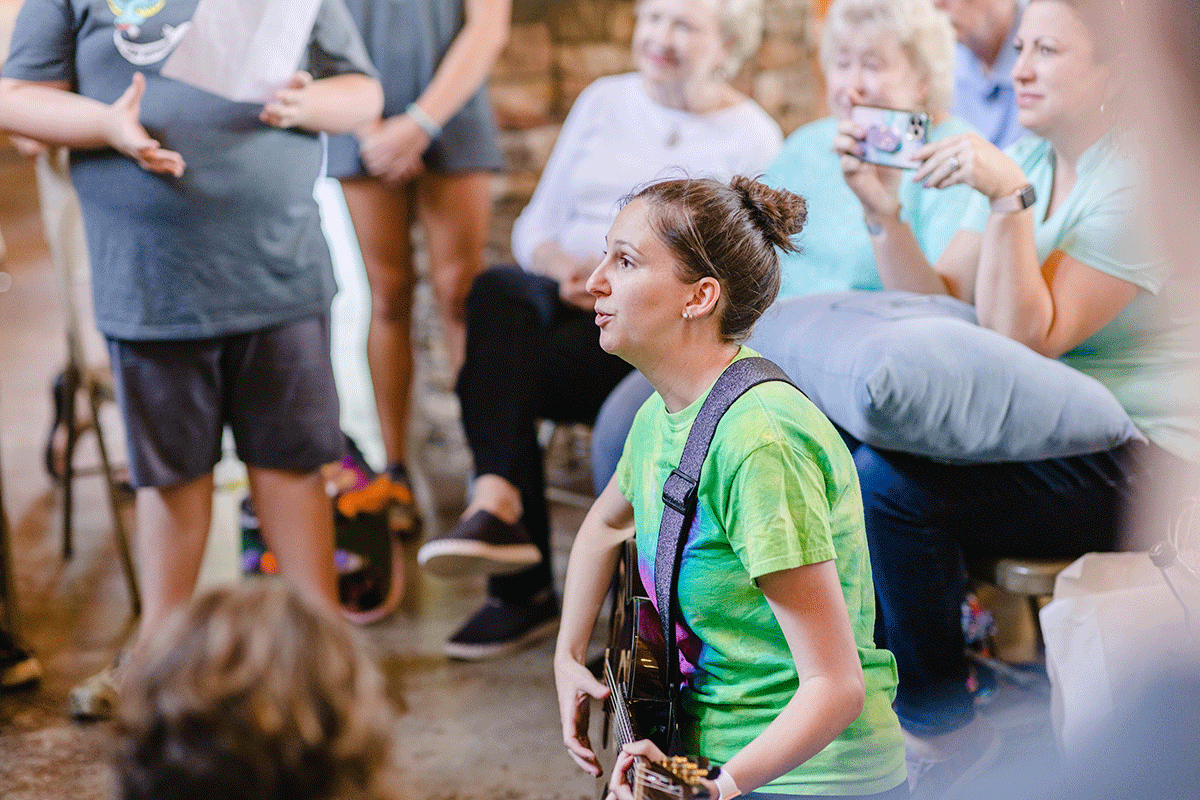Hospice is designed to provide compassionate care for those who are in the end stages of life. In many cases, hospice care plans include complementary therapies, such as art and music therapy.
These complementary therapies are exactly what they sound like—complementary to traditional medical care like the medications needed to manage symptoms. Research has found that these therapies benefit hospice patients in many ways, even helping to relieve discomfort and other symptoms.
Wondering how art and music therapy work, or how they can benefit hospice patients and their families? We explore the topic below.
What is art therapy?
Art therapy is what’s known as a body-mind therapy. In many cases, hospice patients and their family members may be unable to express themselves through words alone. The creation of art allows them to fully express emotions, fears, and even unconscious thoughts.
Art therapy is provided by trained clinicians with degrees in both art and therapy. Art therapists help hospice patients create art, allowing them to express themselves in a variety of mediums, such as doodling, drawing, painting, working with clay, or crafting.
Creating art benefits hospice patients in many different ways. According to the American Art Therapy Association, “art therapy is used to improve cognitive and sensory-motor functions, foster self-esteem and self-awareness, cultivate emotional resilience, promote insight, and enhance social skills.”
The act of creating can help improve mood, provide an outlet for coping with depression and anxiety, and work as a distraction from a life-ending diagnosis. Working together with a hospice patient’s traditional medical treatment, this can help alleviate uncomfortable symptoms and maintain quality of life.
What is music therapy?
Music therapy shares a good deal in common with art therapy in the ways it can benefit patients. It is a research-based therapy that uses music interventions to meet the physical and psychosocial needs of hospice patients and their families.
Music therapy is conducted by a licensed and board-certified clinician who has been trained in music, psychology, anatomy and physiology, and music therapy techniques.
In the hospice setting, using patient-preferred music can decrease pain by lowering stress, releasing endorphins, and providing a distraction. The outcomes of music therapy can come from listening, singing, playing instruments, writing music, and participating in different relaxation techniques using music.
Music therapy can be adapted as a hospice patient moves toward the end of life. Based on their level of responsiveness, patients can participate actively in making music or passively by listening and entraining to the music.
For hospice patients who are closer to transitioning, a music therapist can use the music to match respiratory rates, providing a way to decrease isolation and add comfort to the physiological process taking place.
For hospice patients who are still able to respond and react, music therapy provides an opportunity to decrease anxiety by giving them control of the music and session. This allows them to process through different feelings that may come up from the music, provides a vehicle for connection with the therapist, family, and friends, and gives them a chance to talk through memories and emotions connected with meaningful songs from their lives.
How do the families of hospice patients benefit from art and music therapy?
Art and music therapy can be wonderful tools for the families of hospice patients as well. Families may experience many of the psychosocial benefits listed above and learn ways of coping with hospice, death, and bereavement.
In many cases, these complementary therapies can be done in an individual or group setting, providing opportunities for making connections with others who may be in a similar situation. In a way, this can serve as a meaningful form of grief support for family members.
Art and music therapy can also be incredibly meaningful in other ways. In a recent session at the inpatient unit, the daughter of a patient said that the music was helpful in providing an opportunity for her to finally cry.
These therapies provide a noninvasive, comforting, and connecting outlet for hospice patients and their families. When paired with an understanding of the body and human psyche, they can be hugely beneficial to anyone experiencing loss.
Learn more
Hospice of Northeast Georgia Medical Center partners with you and your family to provide excellent care and enhance your quality of life. Call 770-219-8888 or visit Hospice of NGMC for more information about how we can help.



